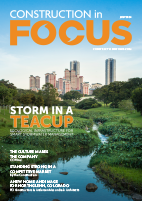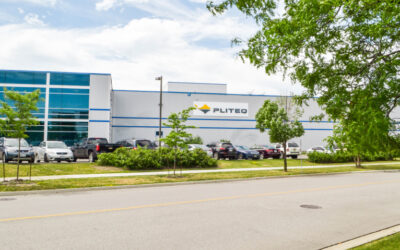When it comes to public transportation, renovations and new builds are fast becoming as high a priority as building infrastructure for electric vehicles.
Following U.S. Vice President Kamala Harris’ announcement in March 2022 in which she announced the Biden-Harris Administration’s commitment to improving public transportation throughout the United States, we explored the advent of Hyperloops and Earth-friendlier mass transit. This month, we explore how and whether American and Canadian public transportation is indeed transforming and what is influencing the changes. We also see how the implementation of Hyperloop technology is faring and whether it was worth the initial hype.
Based on the Bipartisan Infrastructure Law and funded by American Rescue Plan investments, the Biden-Harris Administration’s goal, it stated, was to reduce toxic emissions in a bid to counter climate change. But there was also a social aspect to the mission, with better national health levels, job creation, and improved remuneration all cited as motivation for the public transit makeover.
As statistics indicated that public transit was responsible for just under one-third of all fossil fuels emissions in America, it certainly made sense. With the rise of electric vehicles, the time had come to start cleaning up the sector. The administration’s first stop was to take care of disadvantaged children in under-served communities who have, historically, been exposed to toxic emissions on a much larger scale than children from wealthier areas.
Funding was generous, with over $5 billion in aid arriving via the Bipartisan Infrastructure Law toward the Low- and No-Emission Transit Vehicle Program. The Department of Transportation also chipped in with more than $1 billion for this year plus over $2 billion to the American Rescue Plan, which serves around 20 states’ transportation departments.
More than $370 million was earmarked for the Bus and Bus Facilities program. Modesto City Schools in California was one of the first to place an order with electric bus fabricator Blue Bird Corporation (BLBD) of Macon, Georgia, for thirty vehicles to replace half of its original fleet.
In Canada, governments went public in May of this year with historic news of rolling out the largest electric bus plan on the continent. The plan promises to introduce approximately 1200 electric buses, benefiting around ten public transportation organizations and allowing them to transform their fossil-fueled fleets into clean, modern transportation.
In the United States, schools are electrifying their fleets at an impressive rate. Florida’s Broward County Public Schools (BCPS) for one did not wait for the grass to grow following the White House announcements. Thanks to the support of the Florida Department of Environmental Protection’s (DEP) Electric School Bus Project, BLBD reported delivering its biggest single delivery of buses yet to BCPS in April of this year.
Looking at the BCPS’ collection of over 500 Blue Bird buses, which make up just under half of its fleet, the future of public transportation in Florida is changing faster than, perhaps, expected. BLBD is rightly proud to have delivered more than 20,000 buses running on electricity, propane, and similar. Large enough to transport more than 70 children for over 100 miles per charge, these beautiful yellow school buses are becoming a familiar part of the local landscape.
Staying with electric buses, we also look at Proterra, California’s star electric transit vehicle fabricator. Known for quality electric buses, the company reports impressive recent sales. Since January, it has sold 10 fully electric buses to Sonoma County, 75 Proterra ZX5 emission-free buses to Miami-Dade County, and more to several other areas. Its next largest order has come from the South Carolina Department of Education, which has put in a request for 160 Thomas Built electric school buses to be distributed throughout the state in the coming months.
Airplanes are also slowly becoming battery-powered and Arlington-based Eviation Aircraft is growing. Its famous nine-seater plane, Eviation Alice, is unique in its class and covers about 500 miles on a single charge. While this may be a small start, it appears to be the beginning of the future for commercial electric flying.
In June of this year, the company reported from the Paris air show that Aerolease, a sustainable aviation leader in Miami, Florida, has ordered around 50 of its electric aircraft, bringing its total orders to the region of $4 billion USD.
In addition, United Airlines has planned its first public flights from O’Hare International Airport to Vertiport Chicago in an Archer Midnight air taxi in partnership with Archer Aviation for 2025. As United Airlines’ electric vertical take-off and landing (eVTOL) aircraft, this five-person, six-battery-pack plane also holds baggage and travels well over 100 miles per hour, sometimes beating congested traffic times by up to 50 minutes.
One of the biggest perks is the cost of travel, as developers describe the price of hopping on one of these instead of sitting in traffic. The speedy aircraft could be joined by the 19-seater electric ES-19 aircraft developed by Heart Aerospace, another United Airlines partner, as soon as 2026.
Many counties are working hard to bring battery-powered electric trains to their communities. Stadler, a well-known Swiss train fabricator, has already signed a deal with California’s San Bernardino County Transportation Authority (SBCTA) for a Flirt H2 train. Entirely hydrogen-powered by Ballard Power Systems’ next-generation engineering, the train is set to start running next year.
And that’s not the only exciting news from Stadler. This year, Utah State University (USU) and its ASPIRE Engineering Research Center will become part of Stadler’s development of the battery-powered “Flirt Akku” model. The project is initially set to transform rail travel along the Wasatch Front, an urban zone that’s home to Provo, Ogden, Salt Lake City, Bountiful, and other cities, and will carry its power packs on its roof. The train is fashioned on an earlier, hybrid model, the 110 Flirt Akku, which has been running in Germany since 2018.
This brings us to Hyperloops. Short of coming to a screeching halt, it appears that most developers are in for tough times with these future-positive projects. While a version of Elon Musk’s Boring Tunnel is functional and cuts down travel time between venues at the Las Vegas Convention Center, passengers ride in Musk’s Teslas rather than the pressure-resistant pods that were originally planned.
Despite setbacks, The Boring Company, Musk’s flagship Hyperloop development firm, states on its website that Clark County, Nevada will become home to several similar new stations and miles of tunnels. However, the numbers mentioned on the company’s website and in the Clark County tweet it refers to do not necessarily correspond. Time will tell.
As some Hyperloop firms seem to struggle with funding, a few such tunnels are also reported to have closed, including Musk’s Hawthorne, Canada tunnel and Hyperloop TT’s tunnel not far from Toulouse in France. While some earlier proponents are now back-pedalling on their former faith in Hyperloops, others remain hopeful.
What experts agree on, however, is that, while maybe a tad on the glacial side in its developmental pace, the technology is desperately needed if the planet is to consolidate its efforts towards more guilt-free, Earth-friendly travel. As one critic of the current Las Vegas tunnel points out, adding cars to tunnels that could accommodate trains is not a sustainable solution for the future of cities. Once you’re through the tunnel and back in the congestion of ground-level traffic, where do you park?
As American and European Hyperloop developers navigate rough economic times, a Dutch developer, generously funded by the European Commission’s EIC Accelerator Program, is making more waves.
Backed by well over 10 million euros last year, Hardt Hyperloop is getting ahead in establishing the European Hyperloop Center tubes by 2030. The company is further supported by POSCO International, a Korean Investment firm that signed a letter of intent at the end of last year.
Until these long-awaited, high-pressure pod trains become a reality, however, traditional public transit infrastructure must be kept in shape, which is proving to be a challenge in many places, despite the high hopes of last year. While New York City was recently assigned $1 billion USD to level up its transit system, in Minnesota, St. Paul and Minneapolis public transportation systems currently rely on a new sales tax that aims to generate over $400 million USD per annum.
As some states have had to fight to have their frustrations over public spending heard, civil protest proves essential in protecting public transportation budgets from potentially being raided to solve local governments’ spending dilemmas.
One recent event took place in June in Chicago and San Francisco, where locals staged mock funerals for model trains and buses to voice their disapproval of the status quo. Their approach worked, and instead of kissing goodbye to $2 billion USD from the public transportation budget—threatening the closure of around 20 bus routes—over $1 billion USD in annual support was pledged toward the public transportation system through the state legislature. At the time of writing, the motion was not yet confirmed, however.
In Canada, statistics are showing a drop in public transportation use since the days of COVID. In January of this year, over four million fewer trips were made on urban transportation, amounting to an almost 30 percent drop compared to January 2019, before COVID got going. The good news is that these numbers are growing.
The light at the end of the tunnel, currently, resides in legislation that makes it worthwhile for municipalities to assign resources to accommodating electric vehicles and the infrastructure to keep them running. Under legislation like the Infrastructure Investment and Jobs Act and the Inflation Reduction Act, the U.S. government can provide for over 30,000 infrastructure construction projects, including restoration work.
While every state or province has its own challenges to bear, big tech, corporations, and civilians alike are proving invaluable in coming up with solutions to the evolution and maintenance of public transportation. And, despite budgets being tight post-COVID, there remain innovators hurtling toward humanity’s environmentally friendly transportation goals. It might just take a little longer than first imagined.













